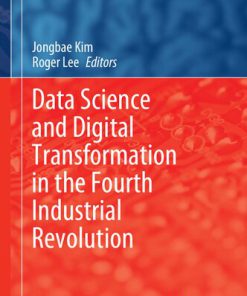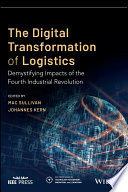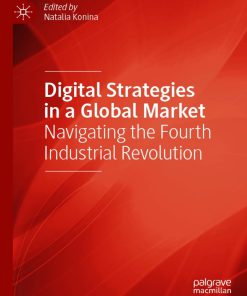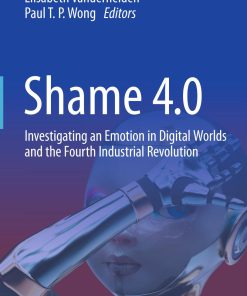Public Goods and the Fourth Industrial Revolution 1st Edition by Maria Płonka 1000625400 9781000625400
$50.00 Original price was: $50.00.$25.00Current price is: $25.00.
Public Goods and the Fourth Industrial Revolution 1st Edition by Maria Płonka – Ebook PDF Instant Download/Delivery: 1000625400, 9781000625400
Full download Public Goods and the Fourth Industrial Revolution 1st Edition after payment
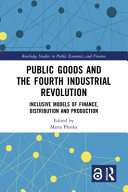
Product details:
ISBN 10: 1000625400
ISBN 13: 9781000625400
Author: Maria Płonka
Public Goods and the Fourth Industrial Revolution 1st Table of contents:
1 The Fourth Industrial Revolution and contemporary technological, economic and cultural megatrends
1.1 Chapter overview
1.2 The Fourth Industrial Revolution and its socio-economic implications
1.3 Contemporary technological, economic and cultural megatrends
1.3.1 Digitization
1.3.2 Globalization – a network of global connections
1.3.3 Urbanization, suburbanization and modern cities
1.3.4 Demographic change – ageing population
1.3.5 Towards sustainable development and a green transformation of the economy
1.3.6 Towards a knowledge-based economy
1.4 Chapter summary
Bibliography
2 Public goods in economics and other social sciences
2.1 Chapter overview
2.2 The dilemma of the definition of PGs
2.2.1 Collective consumption as the main determinant of the public good in P. Samuelson’s concept
2.2.2 Public finance and public choice: two different visions of the state in delivering PGs
2.2.3 Marginal costs of providing PGs as a central determinant of Stiglitz’s concept
2.2.4 Between tragedy and comedy of the commons
2.2.5 Factors influencing the change in the boundaries of PGs
2.3 Global and local goods
2.3.1 Global public goods (GPGs)
2.3.2 Definition and classification of GPGs
2.3.3 The relationship between justice and the efficiency of the supply of GPGs
2.3.4 A system for delivering GPGs
2.3.5 Financing GPGs
2.3.6 Local public goods (LPGs)
2.4 Hybrid public goods (HPGs) or hybrid systems for the delivery of PGs
2.4.1 Definition of HPGs
2.4.2 Definition of a hybrid system for the delivery of PGs
2.4.3 Latest research on hybrid PGs and hybrid systems
2.5 PGs in game theory
2.5.1 Public game theory
2.5.2 Cheaters in the public game
2.5.3 The impact of the social network on the functioning of PGs
2.5.4 The impact of the Fourth Industrial Revolution on the concept of PGs
2.6 Chapter summary
Bibliography
3 The impact of megatrends on the evolution of public goods
3.1 Chapter overview
3.2 Impact of digitization and internetization on public goods
3.2.1 Public goods created by digitization and internetization
3.2.2 Changing the way public goods are delivered in the age of digitization and internetization
3.2.3 Creation of new public goods and digitization and internetization
3.3 Globalization and the evolution of public goods
3.4 Impact of an ageing population on the evolution of public goods
3.5 Neo-urbanization and smart cities in the creation and evolution of contemporary public goods and services
3.6 The sharing economy, contemporary commons and public services
3.7 Chapter summary
Bibliography
4 Health security as a public good in the era of the Fourth Industrial Revolution in Poland
4.1 Chapter overview
4.2 The need for security as a basic human need
4.3 The role of the state in ensuring the need for security
4.3.1 Research methodology
4.3.2 The role of the state in providing social goods
4.3.3 Hierarchy of importance of support for selected social goods by the state and other institutions
4.4 Universal healthcare and the need for health security
4.4.1 Health security and level of UHC
4.4.2 Health needs and how the state meets them
4.4.3 Funding and efficiency
4.4.4 Regulations
4.4.5 Organization and management
4.5 The fourth industrial Revolution and health security
4.6 The role of the state in ensuring health security – the case of Poland
4.7 The concept of inclusivity in healthcare
4.8 Chapter summary
Bibliography
5 Local public goods and public utility services in municipalities (urbanized areas)
5.1 Chapter overview
5.2 Local public goods in the process of provision of public utility services within urbanized areas
5.2.1 Local public goods in municipalities
5.2.2 Specificity of public utility services in urbanized areas
5.2.3 Public utility services in European Union legislation
5.3 Systems for production and distribution of public utility services in cities on the example of local public transport, management of municipal waste and water and sewage management
5.3.1 Privatization v. publicization of public utility services
5.3.2 Models for the production and distribution of public utility services
5.3.3 Overview of models of production and distribution of public utility services in selected countries of the European Union
5.4 The impact of modern technology on the quality of provided public utility services in cities
5.4.1 Modern technologies in the area of providing public services in modern cities
5.4.2 Quality as a paradigm for the provision of public utility services?
5.4.3 Determination of the impact of modern solutions on the quality of public utility services using statistical methods
5.5 A model approach to an inclusive distribution system for local public goods and services in a smart city
5.6 Chapter summary
Bibliography
6 Challenges for the education system in the era of the Fourth Industrial Revolution
6.1 Chapter overview
6.2 Research methodology
6.3 Evolution of the function of education and social capital
6.4 The education system and its role in creating new competences
6.4.1 Competences of the future
6.4.2 Digital competence
6.4.3 Social competences
6.4.4 Cognitive competences
6.5 Digitization of the education process – new challenges
6.6 Pillars of the redefinition of education policy in the era of Revolution 4.0 – toward social inclusion
6.7 Chapter summary
Bibliography
Conclusion
People also search for Public Goods and the Fourth Industrial Revolution 1st :
public lighting industrial revolution
purpose of the industrial revolution
industrial revolution 1780
the industrious revolution was a result of
Tags:
Maria Płonka,Public Goods,Fourth Industrial Revolution
You may also like…
Earth Sciences - Geography
Public Goods and Commons: The Foundation for Human Wellbeing 1st Edition Roland Bardy
Computers
Data science and digital transformation in the fourth industrial revolution Jongbae Kim (Editor)
Politics & Philosophy - Government & Politics
Africa and the Fourth Industrial Revolution Curse or Cure 1st Edition Everisto Benyera
Business & Economics
Digital Strategies in a Global Market: Navigating the Fourth Industrial Revolution Natalia Konina
Business & Economics
Digital Strategies in a Global Market Navigating the Fourth Industrial Revolution Natalia Konina




